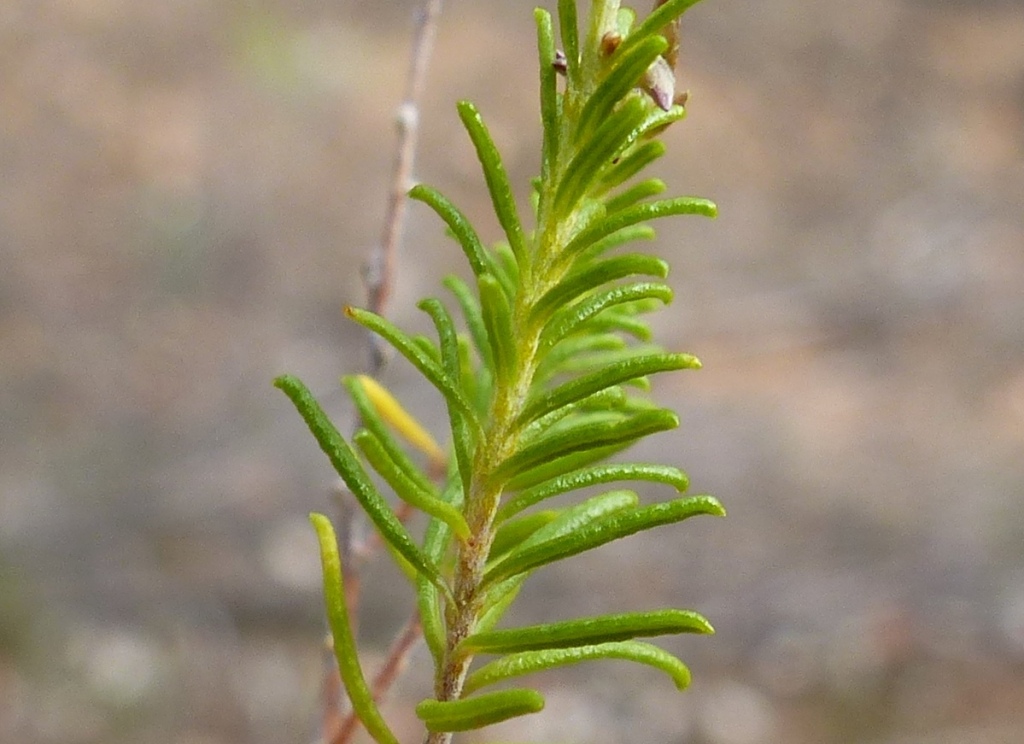Cassinia sifton
Orchard Sifton BushErect aromatic shrub to 1.2–2(–3.0) m high; branchlets sparsely cottony with occasional emergent multicellular hairs. Leaves spreading, sessile, linear, (3.5–)6.0–9.0(–15) mm long, 0.5–0.7 mm wide, glabrous, shining and often viscid above, cottony and viscid beneath (surface almost hidden), apex acute, margins revolute. Inflorescences deep red to brown at maturity, sometimes almost purplish, linear or very narrowly conical, often secund and drooping when young, 4–9 cm long, 1–3 cm wide. Capitula 50–200, deep red to pale brown at maturity, c. conical, 3–3.5(–3.7) mm long, c. 1–1.5 mm wide; involucral bracts 10–15, without differentiated lamina, erect, reddish-hyaline, margin entire, incurved; receptacle bracts absent; florets (1–)2 or 3; corolla lobes red, erect. Cypsela cylindric, 0.8–1 mm long, densely papillose; pappus bristles c. 2–2.5 mm long, apex tapering. Flowers Feb.–Apr.
MuM, Wim, GleP, VVP, VRiv, MuF, GipP, OtP, WaP, Gold, CVU, GGr, DunT, NIS, EGL, EGU, HSF, HNF, Strz, VAlp. Also WA, SA, NSW. Most collections are from central and north-central Victoria, plants occurring mostly on dry, poor stony ground. Often a pioneer species following fire or other disturbance.
A distinctive species, being the only species of the genus in Victoria to have erect red to purple corolla lobes and inflorescences that are red to brown or purplish.
This species was previously included in Cassinia arcuata. Cassinia arcuata in Victoria is currently known with certainty from a single population near Patchewollock in the north-west of the State. In addition to the diagnostic characters that separate the two species, C. arcuata is generally a larger plant with branches up to 1.5 cm in diameter compared to up to c. 1 cm in Cassinia sifton.
Orchard (2017) has argued that observations and collections of Cassinia sifton show that this now locally very common species has dramatically spread in both New South Wales and Victoria in response to human disturbance. There are no records of this species from Victoria prior to the major gold rushes of the 1850s. It is possible that it was introduced from New South Wales by miners during this time.
The mapped distribution here is based only on recently determined specimens at MEL. Older specimens of the species are yet to be added to the distributional database.
 Spinning
SpinningSynonyms
Orchard, A.E. (2017). A revision of Cassinia (Asteraceae: Gnaphalieae) in Australia. 7. Cassinia subgenus Achromolaena. Australian Systematic Botany 30(4): 337–370.



